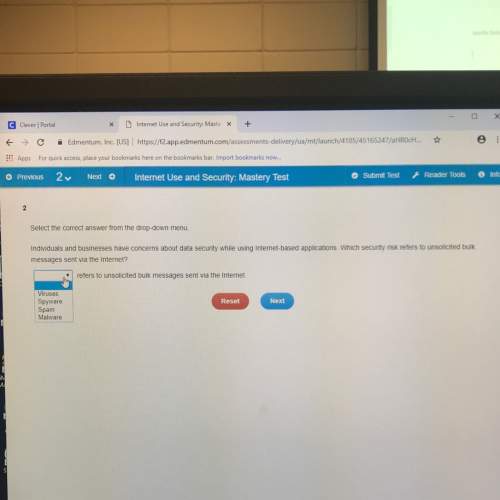
Computers and Technology, 14.09.2019 09:20 2019dawnmcmillan
At-most-once semantic ensures that a given rpc request will not be executed more than once. there is an alternative rpc semantic called at-least-once semantic, which ensures that each request is executed to completion. how do you implement these two semantics? for idempotent operations, which semantic is generally more suitable? can you name an application scenario where these two semantics can be used interchangeably?

Answers: 2
Another question on Computers and Technology

Computers and Technology, 22.06.2019 03:30
Some of your friends have gotten into the burgeoning field of time-series data mining, in which one looks for patterns in sequences of events that occur over time. purchases at stock exchanges--what’s being bought-- are one source of data with a natural ordering in time. given a long sequence s of such events, your friends want an efficient way to detect certain "patterns" in them--for example, they may want to know if the four events buy yahoo, buy ebay, buy yahoo, buy oracle occur in this sequence s, in order but not necessarily consecutively. they begin with a collection of possible events (e.g., the possible’ transactions) and a sequence s of n of these events. a given event may occur multiple times in s (e.g., yahoo stock may be bought many times in a single sequence s). we will say that a sequence s’ is a subsequence of s if there is a way to delete certain of the events from s so that the remaining events, in order, are equal to the sequence s’. so, for example, the sequence of four events above is a subsequence of the sequence buy amazon, buy yahoo, buy ebay, buy yahoo, buy yahoo, buy oracle their goal is to be able to dream up short sequences and quickly detect whether they are subsequences of s. so this is the problem they pose to you: give an algorithm that takes two sequences of even~s--s’ of length m and s of length n, each possibly containing an event more than once--and decides in time o(m n) whether s’ is a subsequence of s
Answers: 2

Computers and Technology, 23.06.2019 01:50
Write a program that uses a random number generator to generate a two digit positive integer and allows the user to perform one or more of the following operations: a. double the number. b. reverse the digits of the number. c. raise the number to the power of 2, 3, or 4. d. sum the digits of the number. e. if the number is a two-digit number, then raise the first digit to the power of the second digit. f. if the number is a three-digit number and the last digit is less than or equal to 4, then raise the first two digits to the power of the last digit. after performing an operation if the number is less than 10, add 10 to the number. also, after each operation determine if the number is prime. each successive operation should be performed on the number generated by the last operation. your program should not contain any global variables and each of these operations must be implemented by a separate function. also, your program should be menu driven. 7. (fraction calculator) write a program that
Answers: 1


Computers and Technology, 23.06.2019 11:00
What are the possible consequences of computer hacking? what is computer piracy? describe some examples. what are the effects of computer piracy? what are the possible consequences of computer piracy? what is intentional virus setting? describe some examples. what are the effects of intentional virus setting? what are the possible consequences of intentional virus setting? what is invasion of privacy? describe some examples. what are the effects of invasion of privacy? what are the possible consequences of invasion of privacy? what is an acceptable use policy and what is the purpose of the acceptable use policy what is intellectual property and how can you use it?
Answers: 1
You know the right answer?
At-most-once semantic ensures that a given rpc request will not be executed more than once. there is...
Questions

History, 11.02.2022 21:20


History, 11.02.2022 21:20

Biology, 11.02.2022 21:20

Chemistry, 11.02.2022 21:20



Mathematics, 11.02.2022 21:20

Mathematics, 11.02.2022 21:20

Mathematics, 11.02.2022 21:20




English, 11.02.2022 21:20


Mathematics, 11.02.2022 21:20

Geography, 11.02.2022 21:20


English, 11.02.2022 21:20

English, 11.02.2022 21:20




